Research Posters
Dr. Thibodeau and her Hearing Health Lab members submitted several research posters for the American Academy of Audiology 2021 Virtual Conference. Congratulations to the lab members who received nominations for the American Academy of Audiology Foundation’s James and Susan Jerger Awards for Excellence in Student Research.
VERIFICATION OF ASSISTIVE TECHNOLOGY
Akhila Sivaswami — Benefits of Wireless Technology for Persons with Normal Hearing
Poster presented at the America Academy of Audiology Annual Conference, 2018
Akhila graduated from The University of Texas at Dallas in 2020 and now is working as an audiologist at Sutter Health in Castro Valley, California. Speech understanding in conditions with poor signal-to-noise ratio can be challenging even for normal-hearing individuals. Such individuals often encounter listening difficulties in restaurants, sporting events or entertainment venues. Poor signal-to-noise ratio (SNR) can be a result of reverberant environments, increasing distances from the speaker of interest or increased background noise.
Audrey Harris — Use of the Assistive Technology Validation Protocol to Demonstrate the Benefits of Wireless Technology
Poster presented at the Texas Academy of Audiology Annual Conference, October 2018
It is common that communication challenges experienced by persons with hearing loss often result in the need for technology beyond the personal hearing aid. Noisy environments lead to reduced speech recognition in both individuals with hearing loss and with normal hearing. The purpose of the study was to examine a protocol developed to validate the benefit of using assistive listening devices to enhance speech recognition in noise.
Logan Honea — Output Measures of Assistive Technology Headphones
This project sought to establish a valid and reliable way to measure the output of headphones often provided with assistive listening devices. The Simulated Head and Pinna system was utilized with a Fonix 35 Hearing Aid Analyzer microphone to measure the output of these headphones. Between trials, there was no significant difference in each headphone, indicating that this method could be utilized in further research and by public facilities to ensure their devices are worthy of use by visitors.
Audrey Taylor — Technology Transmission Range
Recognition of high-frequency phonemes impacts word recognition in noise. Assistive Listening Devices (ALDs) improve word recognition by increasing the signal-to-noise ratio.
The purpose of this study was to evaluate if individuals, especially those with hearing loss, could use ALDs to increase the accuracy of scoring patient responses during audiological evaluations. Data revealed improved scoring accuracy when assistive technology was used to convey patient responses to the audiologist.
Audrey Taylor – Benefits for Assistive Listening Devices for Scoring Word Recognition Tests
It was hypothesized that audiologists with hearing loss and/or increased age could improve their accuracy in scoring word recognition tests in clinical practice using ALDs. The results of participants with normal and sensorineural hearing loss showed significant benefit with the Roger Pen when scoring word recognition testing presented in babble noise in typical clinical testing arrangements. These benefits could be even greater when combined with context clues, speechreading skills, and other various communication strategies. It is also noteworthy that the participants only had a 30-minute adjustment to the amplification and further improvements may be observed with individuals’ personal hearing aids to which they have adjusted. Furthermore, direct connections such as Roger receivers attached to hearing aids may enhance the benefits received. These results provide support that ALDs can help close the gap in hearing handicaps, ease listener fatigue, and add to overall enhanced quality of life.
Alexander Morris — Assistive Technology Validation (ATV) Protocol: Audiology Outside the Soundbooth
Hearing aids and cochlear implants are well-established options for individuals with hearing loss; however, in some cases, assistive listening devices (ALDs) such as wireless microphones are necessary to help these individuals better communicate in real-world noisy environments.
This study aimed to propose a new, succinct validation protocol for this technology. The Assistive Technology Validation (ATV) Protocol uses spoken BKB-SIN sentences and noise produced via a Bluetooth speaker to evaluate ALD performance outside the sound booth, significantly reducing test time. The proposed protocol can be a useful tool in clinical or education audiology.
Ginny Land — Accuracy of Speech Recognition in a Five-Speaker Array Using Hearing Assistive Device
Hearing assistive technology vastly helps understanding speech when presented with competing noise. This study’s purpose was to assess the accuracy of a wireless microphone in two different directionality modes, in competing noise with a multiple speaker array. Participants with and without hearing loss showed improvement with the wireless microphone in an omnidirectional mode.
Nina Kao, Linda Thibodeau — Electroacoustic Evaluation of Pediatric-Focused Hearing Assistive Devices/Systems in Different Digital Signal Transmission Arrangements
Hearing assistive devices/systems (HADS) are intended to facilitate hearing by providing amplification of an acoustic signal and/or improving signal-to-noise ratio (SNR). The primary goal of this study was to compare and verify the electroacoustic analysis (EAA) of HADS in different DM transmission arrangements per ANSI S3.47-2014 standard. The secondary goal was to evaluate the transparency of HADS based on AAA-2011 Guidelines. EAA findings suggest the need for specification sheets for HADS across manufacturers to determine if the devices are meeting specifications.
Kortney Bush and Megan Cantwell – Verification of Remote Microphones paired to Implants by Audiologists Who are Hard-of-Hearing
Kortney Bush, BS, Megan Cantwell and Linda Thibodeau, PhD
It is critical for audiologists to perform listening checks on remote microphone systems that are paired with cochlear implants, given that electroacoustic verification protocols commonly used with hearing aids cannot be performed. Special arrangements should be considered for audiologists who are deaf or hard of hearing. The purpose of this research was to develop procedures to make listening checks more accessible for audiologists who are deaf or hard of hearing by using connections to Roger technology.
ACCESSIBILITY AND ACCOMODATIONS
Lydia Berger — Awareness and Accessibility of Auditory Accommodations in Public Venues
The Americans with Disabilities Act requires public venues to provide reasonable accommodations for individuals with disabilities. These accommodations are necessary for some attendees to get equal access during events or tours. While great efforts have been made for those with physical disabilities and limited vision, the availability and general knowledge about accommodations for the Deaf and Hard of Hearing is still limited.
The purpose of this study is to quantitatively measure how easily accessible these accommodations are and how much and what knowledge was available. Fifteen venues, of various types, were chosen from a search of popular venues in Dallas. A questionnaire was created and then completed with information obtained from a phone interview and a search of their website. As expected, most venues had little to no information available and scored poorly. Even some of the venues that scored well had key pieces of information missing, such as where to pick up the devices or how far in advance a request for an interpreter needs to be made.
There is a much room for improvement, but knowing where the largest, and most common deficits are will help form targeted strategies to address those shortfalls.
VIRTUAL TESTING IN AUDIOLOGY
Kortney Bush — Evaluation of a Protocol for Virtual Testing of Speech Recognition in Noise when Using “Live Listen” Feature on the iPhone
Kortney Bush, BS, and Linda Thibodeau, PhD
Listen to Kortney Bush’s recorded presentation
Due to COVID-19, remote access to audiological services is more important than ever. Speech in noise performance was assessed using a virtual paradigm, in ten listeners with typical hearing, with and without the Live Listen feature on the iPhone. Participants performed significantly better in the Live Listen condition. The virtual paradigm has provided a foundation for future research in remote access to aural rehabilitation services.
Poster presented virtually at the Texas Academy of Audiology Annual Conference, October 2020
COCHLEAR IMPLANTS
Hannah Calhoun, Amanda Frost, Linda Thibodeau — Mapping Different Ways to Use Roger Assistive Listening Devices with Cochlear Implants
Wireless technology arrangements for the three CI manufacturers were explored in-depth with respect to several features that should be considered when selecting an arrangement This guide is available to help connect Roger receivers and ensure equal access to sound for students with cochlear implants.
HEARING AIDS
Rebekah Havens — Features of MFi and MFA Hearing Aids — 2019
With the popularity of smartphones, many persons are interested in their connectivity with hearing aids. The first aids directly connected to iPhones and were referred to as MFi (Made for iPhone) aids. The purpose of this project was to compare features across hearing instruments with wireless connectivity to smartphones. The features of interest include smartphone compatibility, rechargeable batteries, telecoil, style of aid, and other capabilities such as health data tracking. Information was collected by first consulting websites and then getting clarification from manufacturers so that comparisons could be made of these common desirable features.

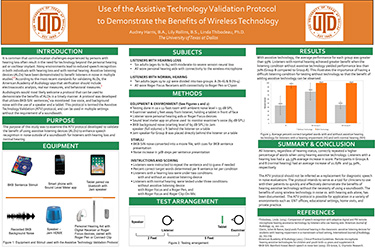
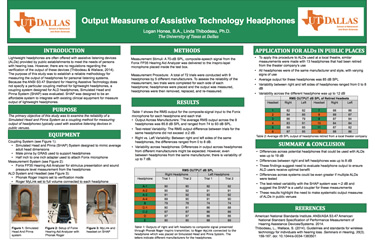
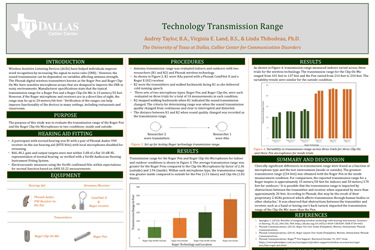
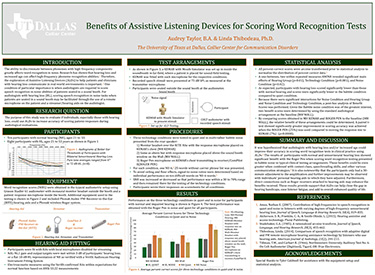
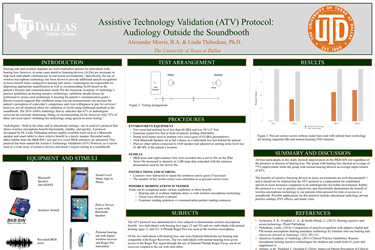
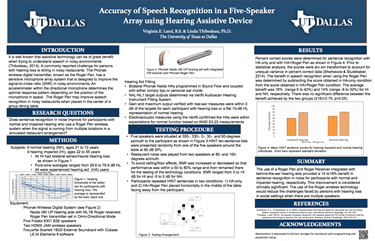
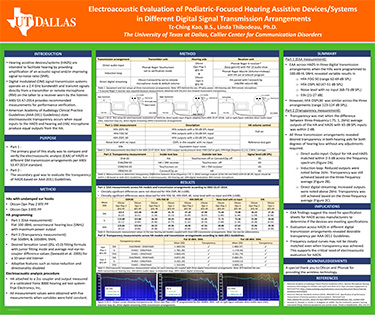
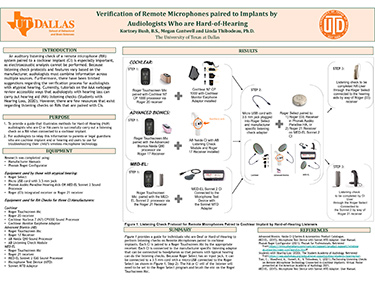
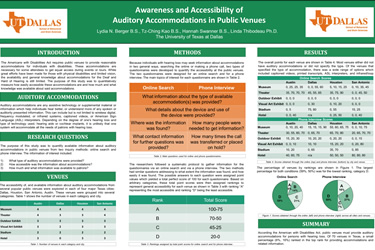
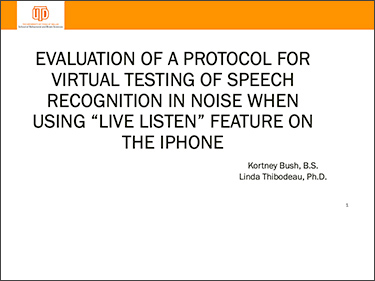
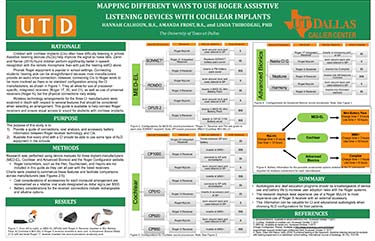
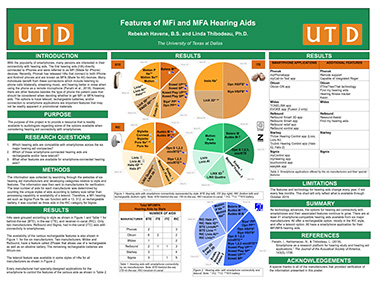
You must be logged in to post a comment.